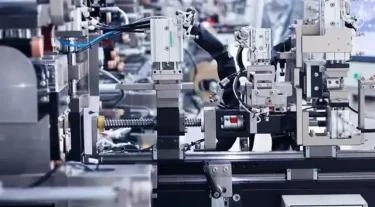
# Tape Manufacturing Process and Techniques
## Introduction to Tape Manufacturing
Tape manufacturing is a complex process that involves multiple stages to create adhesive products for various applications. From everyday household tapes to industrial-grade adhesive solutions, the production of tapes requires precision engineering and careful material selection.
## Raw Materials Used in Tape Production
The foundation of any tape product lies in its raw materials. Manufacturers typically use:
– Backing materials (plastic films, paper, cloth, or foil)
– Adhesive compounds (rubber-based, acrylic, or silicone)
– Release liners (for pressure-sensitive tapes)
– Additives (tackifiers, stabilizers, and plasticizers)
## The Tape Manufacturing Process
### 1. Backing Material Preparation
The process begins with preparing the backing material. For plastic tapes, this involves:
– Extruding polymer resins into thin films
– Stretching and orienting the film for strength
– Applying surface treatments for better adhesive bonding
### 2. Adhesive Application
There are several methods for applying adhesive to the backing material:
– Solution coating: Dissolving adhesive in solvent and coating the backing
– Hot melt coating: Applying molten adhesive directly
– Water-based coating: Using water as the carrier for adhesive particles
### 3. Drying and Curing
After application, the adhesive must be properly dried or cured:
– Solvent-based adhesives require evaporation chambers
– Water-based adhesives need controlled drying environments
– Some formulations require UV or thermal curing
### 4. Slitting and Rewinding
The final production steps include:
– Precision slitting to desired widths
– Rewinding onto cores for packaging
– Quality control checks for consistency
## Advanced Tape Manufacturing Techniques
Modern tape production incorporates several specialized techniques:
### Multi-layer Coating
Some tapes require multiple adhesive layers with different properties, achieved through:
– Sequential coating processes
– Simultaneous multi-layer application
– Gradient adhesive formulations
### Pattern Coating
For specific applications, adhesives are applied in patterns rather than full coverage:
– Dot matrix patterns
– Striped applications
– Custom geometric designs
### Release Liner Technology
Pressure-sensitive tapes often incorporate:
– Silicone-coated release liners
– Differential release coatings
– Linerless tape technologies
## Quality Control in Tape Manufacturing
Ensuring consistent quality involves:
– Adhesion strength testing
– Peel resistance measurements
– Temperature stability evaluations
– Aging and durability tests
## Environmental Considerations
Modern tape manufacturers focus on:
– Reducing solvent use
– Developing water-based adhesives
– Creating recyclable tape products
– Implementing energy-efficient production methods
## Future Trends in Tape Manufacturing
The industry is moving toward:
– Smart tapes with embedded sensors
– Biodegradable adhesive formulations
– Nano-technology enhanced products
– Automated production with AI quality control
The tape manufacturing process continues to evolve with technological advancements, meeting the growing demands of various industries while addressing environmental concerns. From simple packaging tapes to high-performance industrial solutions, modern manufacturing techniques ensure reliable and versatile adhesive products for countless applications.
Keyword: tape manufacturing